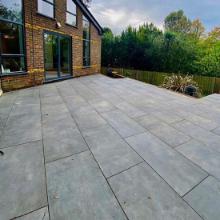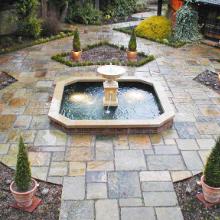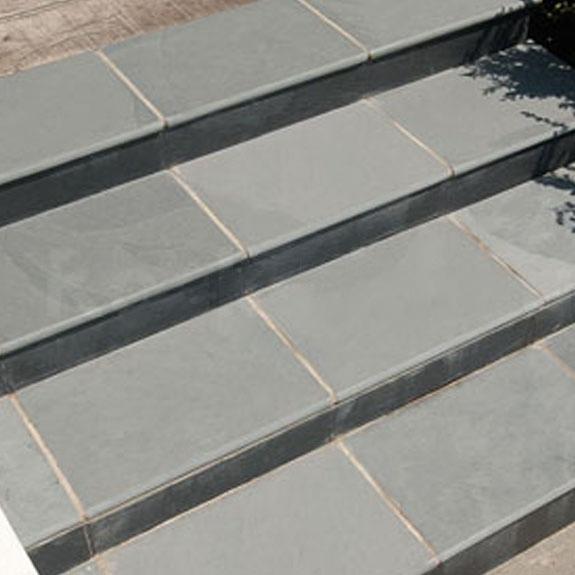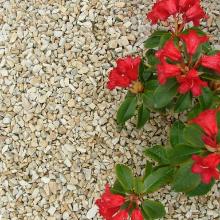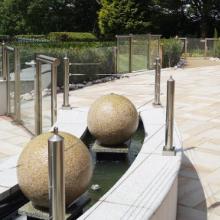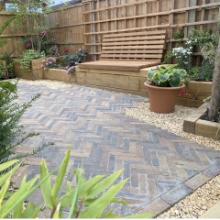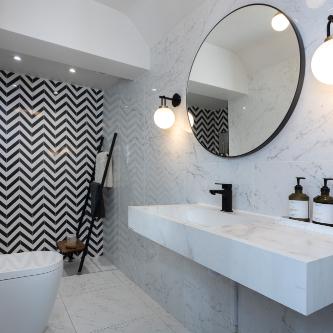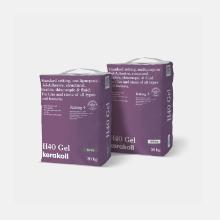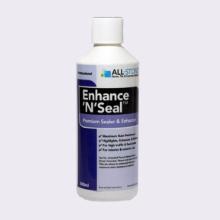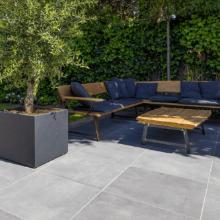The production of outdoor porcelain tiles is one of the most technically advanced forms of ceramic manufacturing. Today’s leading European factories combine traditional ceramic science with robotics, precision process control, and environmental sustainability.
Raw Materials and Composition
Porcelain tile production begins with the careful selection of raw materials — mainly kaolin clay, feldspar, silica, and other refined minerals. The proportion and purity of these ingredients determine the body colour, hardness, and mechanical strength of the finished tile. In the best facilities, material handling, mixing, and feeding systems are fully automated and robotically controlled, reducing contamination and ensuring batch consistency. Even at this early stage, parameters such as moisture content, particle size, and mineral blending are closely monitored through in-line sensors and AI quality assurance systems.
Mixing, Grinding, and Slurry Preparation
The raw materials are combined with water to form a slurry, which is then ground in ball or
continuous mills until the desired fineness is achieved. This stage is both energy-intensive and quality-critical, as fine grinding ensures proper compaction and strength in later stages.
Advanced producers optimise this step using variable-speed drives and real-time viscosity control, improving both quality and energy efficiency.
Spray Drying
The prepared slurry is dried using high-pressure atomisation to create a fine, uniform powder. The moisture content, typically between 5% and 7%, must be precisely controlled. This influences both the pressing performance and mechanical strength of the finished tile. Any inconsistency at this stage can lead to surface defects, warping, or colour variation in later processes.
Pressing and Shaping
The spray-dried powder is compacted under pressures exceeding 400–500 kg/cm² using large hydraulic presses. This stage defines both the tile’s dimensions and surface texture. Many factories now use 3D moulds or digital pressing systems that integrate reliefs and textures directly into the tile surface. At this point, moisture balance is again critical — too dry, and cracks may form; too moist, and the tile may deform during firing.
Digital Decoration and Surface Treatment
Modern porcelain decoration is achieved using high-resolution digital inkjet systems, which apply ceramic pigments to the unfired (“green”) tile surface. Leading manufacturers continuously upgrade these printers to maintain superior realism and consistency. These systems can replicate marble veining, natural stone textures, or complex graphic patterns with up to 1000 dpi resolution.
Multi-layer digital effects and laser-engraved textures allow the creation of sophisticated antislip finishes and matching indoor/outdoor surface variants.
Firing
Tiles are fired in continuous roller kilns that may reach lengths of up to 100 metres. The
temperature inside rises gradually to around 1220–1250°C, then cools slowly under controlled conditions. During firing, vitrification occurs — the transformation of minerals into a dense, glass-like body with extremely low porosity (<0.5%). Modern factories increasingly use electric or hybrid kilns powered by renewable energy, often with solar arrays providing part of the electrical load. Waste heat is recovered to preheat incoming air and reduce energy consumption.
Sorting, Quality Control, and AI Inspection
Once fired, the tiles are sorted by dimensional accuracy, tone, and surface quality. The best
manufacturers employ AI-based optical inspection and laser measurement systems to detect even microscopic defects. Each batch is assigned a unique calibration and shade code, printed on packaging to ensure consistent colour matching across projects. Lower-tier manufacturers may skip or simplify this process, leading to visible differences between batches.
Typical Sizes and Thicknesses
Exterior porcelain tiles are generally produced in 60×60 cm, 60×90 cm, 60×120 cm, 45×90 cm, 80×80 cm, 90×90 cm, 100×100 cm, and 120×120 cm formats. Standard outdoor thickness is 20 mm, while indoor versions range from 9–12 mm. Some producers also offer 16 mm transitional tiles or 30 mm heavy-duty options. Many collections include matching interior and exterior finishes, allowing continuous visual flow between spaces.
Sustainability and Environmental Performance
Modern porcelain factories operate under strict European environmental standards such as ISO 14001. Process water is fully recycled, solid waste is reprocessed, and emissions are monitored continuously. The shift toward electric kilns and solar power represents a major step in reducing the industry’s carbon footprint.
Conclusion
Porcelain outdoor tile production has evolved into a high-technology, low-defect process where robotics, precision control, and sustainability coexist. Every stage — from raw material selection to AI inspection — contributes to a product that combines mechanical strength, aesthetic precision, and environmental responsibility. It is this synthesis of engineering and artistry that defines the best porcelain paving available today.
